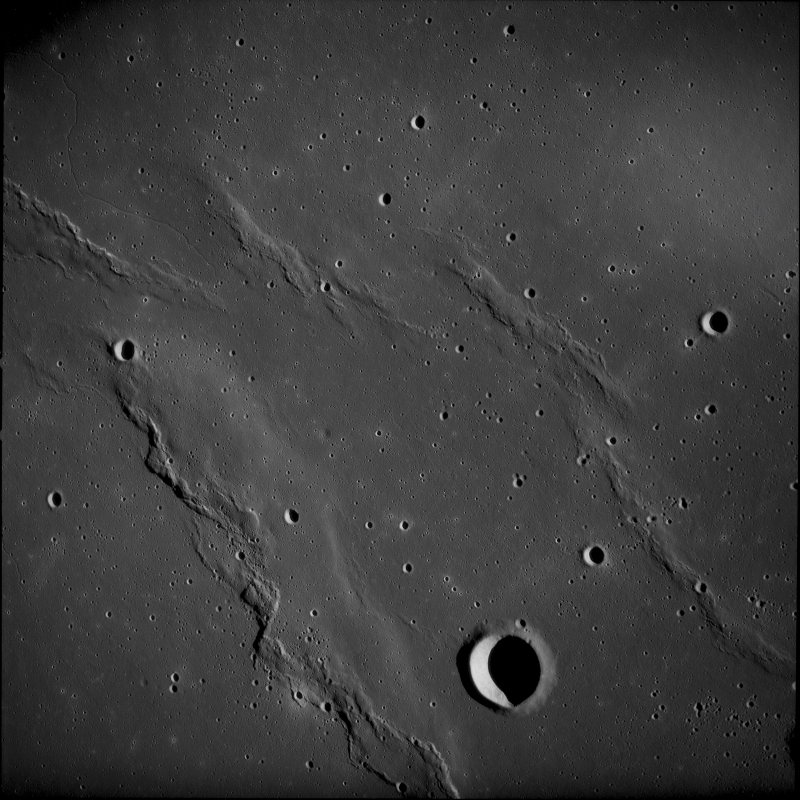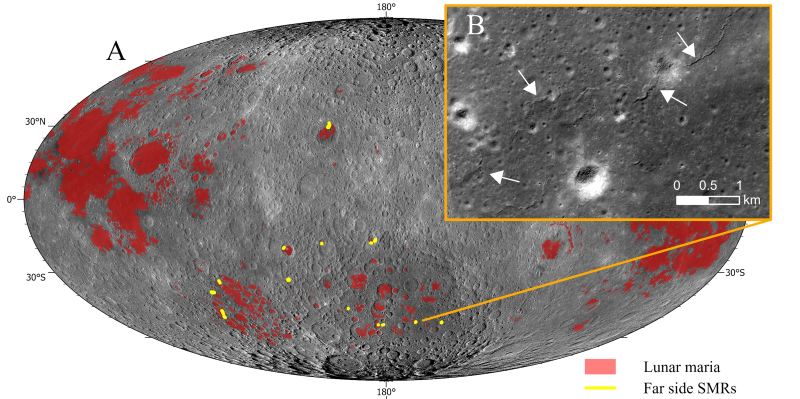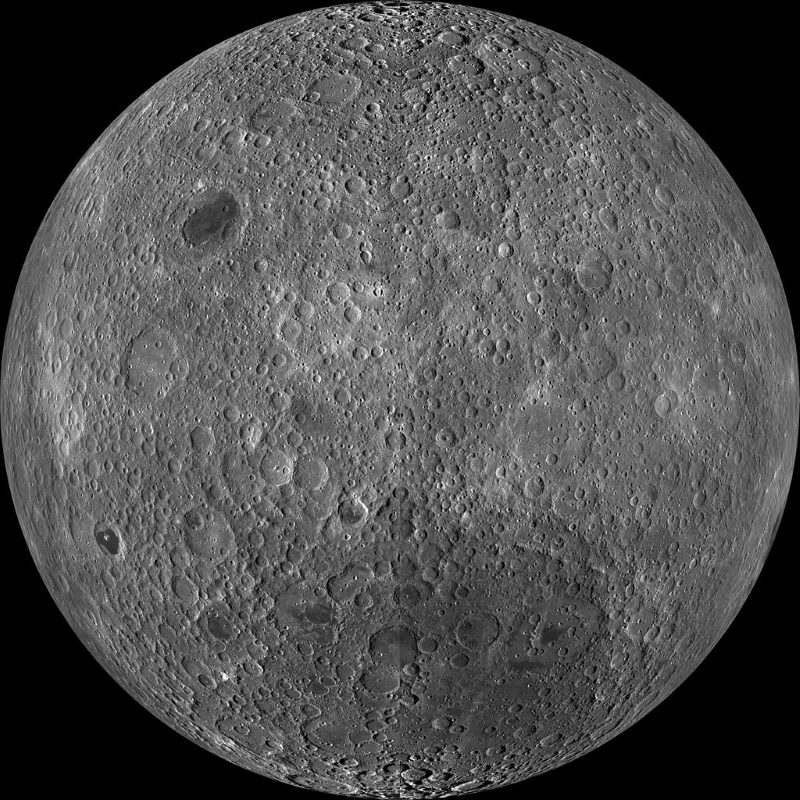Across the lifetimes of people alive on Earth today, scientists have assumed the moon has been a dead, unchanging world for billions of years. But, in this century, researchers found signs of more recent geologic activity in the lunar maria, or “seas,” the ancient beds of lava we see as the “face” of the man in the moon. And now, for the first time, they’ve found evidence for recent geologic activity on the moon’s far side. They said on January 27, 2025, that they’ve found 266 lunar ridges on the far side: evidence the moon has been active within the past 200 million years and might still be active today.
The researchers from the University of Maryland and the Smithsonian Institution published their peer-reviewed findings in The Planetary Science Journal on January 21, 2025.
Is the moon dead?
Scientists believe that Earth’s moon formed early in the history of our solar system, some 4.5 billion years ago, when a Mars-sized object collided with the young Earth. This collision would have blasted superheated material into space, which might then have coalesced into Earth’s moon. So the prevailing wisdom today is that our moon began its life as a molten world, home to intense seismic and volcanic activity. Since then, in the following billions of years, it gradually cooled and contracted. In this scenario, the moonquakes first detected by Apollo astronauts would have stemmed from the slow cooling process that the moon is still undergoing today. This gradual cooling causes the moon’s interior to shrink and creates stress along fault lines, leading to small seismic events. So we can have “moonquakes,” even though the moon was thought to be inactive on its surface.
Some of our best evidence for this contraction is found in the large dark patches on the moon called lunar maria. These formed when lava filled asteroid impact craters and later solidified. And the maria also contain large arching folds known as wrinkle ridges, which scientists believe must have developed when the moon’s crust contracted.
Scientists dated these large ridges to between roughly 1 and 4 billion years ago. And they long believed the lunar maria have been inactive since then.

Small ridges point to recent activity
But in the past decade, researchers have found smaller ridges in the lunar maria that seem to have formed much more recently. These ridges appear to have emerged within the last billion years, and some as recently as 10 million years ago.
All of these features were found on the side of the moon that faces Earth. But did the recent geological activity occur on the other side of the moon, too?
That’s what these researchers wanted to determine. And, sure enough, they identified very similar young ridges on the moon’s far side, providing the first evidence of recent geological activity across the moon as a whole.
Study co-author Jaclyn Clark summarized:
Many scientists believe that most of the moon’s geological movements happened 2 1/2, maybe 3 billion years ago. But we’re seeing that these tectonic landforms have been recently active in the last billion years and may still be active today. These small mare ridges seem to have formed within the last 200 million years or so, which is relatively recent considering the moon’s timescale.

Mapping the far side of the moon
Examining data from the Lunar Reconnaissance Orbiter – which has been photographing the moon since 2009 – the researchers found 266 previously unknown small ridges on the far side of the moon. And they established these features are relatively young by using a technique called crater counting. Clark explained:
Essentially, the more craters a surface has, the older it is; the surface has more time to accumulate more craters. After counting the craters around these small ridges and seeing that some of the ridges cut through existing impact craters, we believe these landforms were tectonically active in the last 160 million years.
The youngest of these ridges formed just 84 million years ago. That might not sound recent, but it’s a mere fraction of the billion or so years that was once thought to separate us from the moon’s most recent geological activity.
What caused this activity?
So what created these ridges? Much like the larger ridges formed billions of years ago, the researchers said the small ridges were in part caused by the shrinking of the moon, which is still ongoing today as it continues to cool. But they also said that gravitational stress due to the gradual shifting of the moon away from Earth likely contributed too.
These are the same forces that scientists previously said created the ridges on the moon’s near side. And the new far-side ridges do appear very similar to their near-side counterparts.
Still active today?
Amazingly, the researchers said that geological activity in these areas might still be ongoing.
Ever since the Apollo astronauts placed seismometers on the moon in 1969-72, we’ve known that moonquakes are a common occurrence. Like the ridges, these are mainly caused by the contraction of the moon as it cools. And the new findings suggest that the ridges might be related to this seismic activity.
This is particularly important in light of today’s renewed interest in lunar exploration. Many of the newly discovered ridges are around the moon’s south pole, which was the destination for several recent lunar landers and the upcoming manned Artemis mission.
The presence of ice – and therefore water – around the lunar south pole has made it a prime candidate for lunar settlements. The potential for seismic activity might make this unfeasible, the researchers suggested. But south pole missions could equally provide perfect opportunities to learn more about just how alive our moon is. Clark said:
We hope that future missions to the moon will include tools like ground penetrating radar so researchers can better understand the structures beneath the lunar surface. Knowing that the moon is still geologically dynamic has very real implications for where we’re planning to put our astronauts, equipment and infrastructure on the moon.
Bottom line: Newly discovered lunar ridges have provided the first evidence of recent geological activity on the far side of the moon.
Source: Recent Tectonic Deformation of the Lunar Farside Mare and South Pole–Aitken Basin
Read more: The moon is shrinking, causing moonquakes near planned Artemis landing sites
Read more: Moon’s volcanoes were erupting only 120 million years ago
